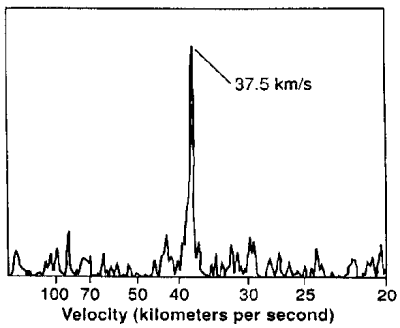 |
Science Frontiers ONLINE No. 105: May-Jun 1996 |
|
|
It
"IT would mean abandoning a great deal of present research." (M. Disney, galaxy specialist, University of Wales)"I'm not being dogmatic and saying IT cannot happen, but if it does, it's a real shocker." (J. Peebles, cosmologist, Princeton University)"
Emphasis added above and for good reason.
Yes, IT is resurgent again and after a remission of only a single issue.
We are referring to those pesky quantized redshifts that won't go away. Now, a new study of them, by B. Napier and B. Guthrie, has appeared in Astronomy and Astrophysics. These astronomers had collected the redshifts for 97 spiral galaxies, measured and remeasured by various observatories, and had found in them a strong quantization in the power spectrum. (See figure.) So unbelievable was this phenomenon that, when they first submitted their paper to Astronomy and Astrophysics, a referee asked them to repeat their analysis with another set of galaxies. This, Napier and Guthrie did with 117 other galaxies. The same 37.5-kilometers/second figure thrust itself out of the data; and their paper was accepted.
It seems. therefore, that a lot of galaxies, maybe all of them, are receding from our telescopes at velocities separated by 37.5 kilometers/second, rather than in a continuous range of velocities. Unless Napier and Guthrie and, of course, W.G. Tifft, the discoverer of IT, can be proven wrong, all of modern astronomy and cosmology will be in jeopardy: the expanding universe, the big bang, the presumed age of the universe, not to mention the endless assertions that these are all facts not theories!
(Matthews, Robert; "Do Galaxies Fly through the Universe in Formation?" Science, 271:759, 1996.)
Reference. The quantization of redshifts is cataloged in AWF8 in our catalog Stars, Galaxies, Cosmos. Ordering information here.
 | The power spectrum of galaxy redshifts reveal a strong signal at 37.5 kilometers/second. |